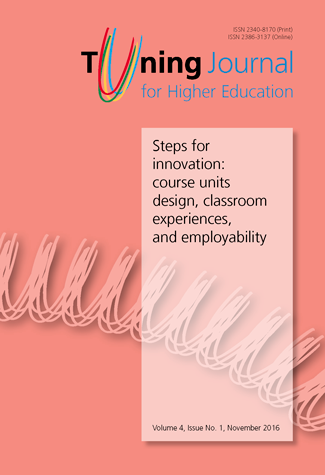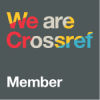Implementing the competences-based students-centered learning approach in Architectural Design Education. The case of the T MEDA Pilot Architectural Program at the Hashemite University (Jordan)
Abstract
Higher educational systems become increasingly oriented towards the competences-based student-centered learning and outcome approach. Worldwide, these systems are focusing on the students as a whole: focusing on their dimensional, intellectual, professional, psychological, moral, and spiritual. This research was conducted in an attempt to answer the main research question: how can the architectural design courses be designed based on the required competences and how can the teaching, learning activities and assessment methods be structured and aligned in order to allow students to achieve and reach the intended learning outcomes? This research used a case study driven best practice research method to answer the research questions based on the T MEDA pilot architectural program that was implemented at the Hashemite University, Jordan. This research found that it is important for architectural education to adapt the students-centered learning method. Such approach increases the effectiveness of teaching and learning methods, enhances the design studio environment, and focuses on students’ engagement to develop their design process and product. Moreover, this research found that using different assessment methods in architectural design courses help students to develop their learning outcomes; and inform teachers about the effectiveness of their teaching process. Furthermore, the involvement of students in assessment produces effective learning and enhances their design motivation. However, applying competences-based students-centered learning and outcome approach needs more time and staff to apply. Another problem is that some instructors resist changing to the new methods or approaches because they prefer to use their old and traditional systems. The application for this method at the first time needs intensive recourses, more time, and good cooperation between different instructors and course coordinator. However, within the time this method will be more useful and interesting for the teacher and more effective and formative for students. Finally, the development of architectural academic staff is needed to increase awareness of learning needs of all architectural students. This requires redesigning and aligning their curriculum and courses syllabus according to the requirements of new methods.
Published online: 30 November 2016
Downloads
References
AAAS. Designs for Science Literacy. New York: American Association for the Advancement of Science: Oxford University Press, Inc., 2000.
Ambrose, Susan A., Michael W. Bridges, Michele DiPietro, Marsha C. Lovett, Marie K. Norman, and RICHARD E. MAYER. How Learning Works: Seven Research-Based Principles for Smart Teaching. San Francisco: John Wiley & Sons, Inc., 2010.
Arnau-Sabatés, L., M.T Marzo, M. Jariot, and J. Sala-Roca. “Learning basic employability competence: a challenge for the active labour insertion of adolescents in residential care in their transition to adulthood.” European Journal of Social Work 17, no. 2 (2013): 252-265.
ASCC. ASCC alignment and assessment of students learning outcomes (SLOs): Training manual. California, California: Accrediting Commission for Community Junior College, 2008.
B&FC. Learning, teaching, and assessment strategies guide. Blackpool and The Fylde College, 2013.
Baxter, Pamela, and Susan Jack. “Qualitative Case Study Methodology: Study Design and Implementation for Novice Researchers.” The Qualitative Report 13, no. 4 (2008): 544-559.
BC. Every learning matters: Balton College higher education: Learning. teaching and assessment strategy 2013-2016. Bolton College, Bolton College, 2013.
Biggs, John B. “Aligning teaching for constructing learning.” FOCUS 16, no. 1 (2008): 1-3.
Biggs, John. “Constructive alignment in university teaching.” HERDSA Review of Higher Education, no. 1 (2014): 5-22.
Biggs, John, and Catherine Tang. Teaching for Quality Learning at University. 3rd. Maidenhead: Open University Press/McGraw Hill, 2007.
Bloxham, Sue, and Pete Boyd. Developing Effective Assessment in Higher Education: a practical guide. England: McGraw-Hill House, 2007.
Bodega, Irma Dolores Núñez y. “From curriculum to syllabus design: The different stages to design a program.” MEMORIAS DEL III FORO NACIONAL DE ESTUDIOS EN LENGUAS 13, no. 3 (2007): 275-290.
Boud, David. Assessment 2020: Seven propositions for assessment reform in higher education. Sydney: Sydney: Australian Learning and Teaching, 2010.
Boud, David, Ruth Cohen, and Jane Sampson. “Peer learning and assessment.” Assessment and Evaluation in Higher Education 24, no. 4 (2000): 413-426.
Brown, Sally. “Assessment for learning.” Learning and Teaching in Higher Education, no. 1 (2004): 81-89.
Cabrera, Alberto F., Carol L. Colbeck, and Patrick T. Terernzini. “Developing performance indicators for assessing classroom teaching practices and student learning: The case of engineering.” Research in Higher Education 42, no. 3 (2001): 327-352.
CERI. Assessment for learning — the case fgor formative assessment. OECD/CERI International Conference, 2008.
Clouder, Lynn. “Promotion of reflective learning, teaching and assessment through curriculum design. Occasional Paper No. 10: Connecting Reflective Learning, Teaching and Assessment.” In Connecting Reflective Learning, Teaching and Assessment, edited by Helen Bulpitt and Mary Deane, 8-17. London: Higher Education Academy, Health Sciences and Practice Subject, 2012.
CoRe. A Tuning Guide to Formulating Degree Program Profiles: Including Program Competences and Program Learning Outcomes. Bilbao: University of Deusto, Nuffic / TUNING Association, 2010.
Craddocka, Deborah, and Haydn Mathiasb. “Assessment options in higher education.” Assessment & Evaluation in Higher Education (Taylor & Francis) 34, no. 2 (2009): 127-140.
Crespo, R. M., Najjar, J., Derntl, M., Leony, D., Neumann, S., Oberhuemer, P., Totschnig, M., Simon, B., Gutierrez, I., & Delgado Kloos, C. “Aligning Assessment with Learning Outcomes in Outcome-based Education.” EEE Education Engineering (IEEE EDUCON Education Engineering), 2010: 1-8.
Crowe, Sarah, Kathrin Cresswell, Ann Robertson, Guro Huby, Anthony Avery, and Aziz Sheikh. “The case study approach.” BMC Medical Research Methodology 100, no. 11 (2011): 1-10.
Fox, Bruce E., and John J. Doherty. “Design to Learn, Learn to Design: Using backward design for information literacy instruction.” Communications in Information Literacy 5, no. 2 (2012): 144-155.
Fry, Heather, Steve Ketteridge, and Stephanie Marshall. “Understanding student learning.” In A Handbook for Teaching and Learning in Higher Education: Enhancing Academic Practice, edited by Heather Fry, Steve Ketteridge and Stephanie Marshall, 8-26. New York: Routledge, 2009.
Gibbs, Andy, Declan Kennedy, and Anthony Vickers. “Learning Outcomes, Degree Profiles, Tuning Project and Competences.” Journal of the European Higher Education Area, 2012: 72-88.
GMIT. Code of Academic Policy No. 4: Learning, Teaching & Assessment Strategy 2010 - 2015. Galway-Mayo Institute of Technology, Dublin: Academic Council of GMIT, 2010.
Goff, Lori, et al. Learning Outcomes Assessment: A Practitioner’s Handbook. Ontario: Higher Education Quality Council of Ontario (HEQCO), 2014.
Gosling, David. “Supporting student learning.” In A Handbook for Teaching and Learning in Higher Education: Enhancing Academic Practice, edited by Heather Fry, Steve Ketteridge and Stephanie Marshall, 113-131. New York: Routledge, 2009.
Griffiths, Sandra. “Teaching and learning in small groups.” In A Handbook for Teaching and Learning in Higher Education: Enhancing Academic Practice, edited by Heather Fry, Steve Ketteridge and Stephanie Marshall, 72-84. New York: Routledge, 2009.
Hall, Richard. “Aligning learning, teaching and assessment using the web: An evaluation of pedagogic approaches.” British Journal of Educational Technology (Blackwell Publishers Ltd) 33, no. 2 (2002): 149-158.
Hoskins, Sherria L., and Stephen E. Newstead. “Encouraging Students motivation.” In A Handbook for Teaching and Learning in Higher Education: Enhancing Academic Practice, edited by Heather Fry, Steve Ketteridge and Stephanie Marshall, 27-39. New York: Routledge, 2009.
Hounsell, Dai. “Evaluating courses and teaching.” In A Handbook for Teaching and Learning in Higher Education: Enhancing Academic Practice, edited by Heather Fry, Steve Ketteridge and Stephanie Marshall, 198-212. New York: Routledge, 2009.
Kessels, Joseph, and Tjeerd Plomp. “A relational approach to curriculum design.” Verschenen in Journal of Curriculum Studies 31, no. 6 (1999): 679-709.
Khwaja, Iftikhar Uddin, Shahnaz Akhtar, and Abida Mirza. Module III: Currculum Developmet, Assessment and Evaluation: Professional Competency Enhancement Program for Teachers (PCEPT). Islamabad: National Academy of Higher Education (NAHE): Learning Innovation Division and Higher Education Commission (HEC), 2014.
Knaack, Liesel. Enhancing your programs and cources through alighed learning outcomes. Vancouver Island University, Vancouve: Centre for Innovation and Excellence in Learning, 2015.
Knight, Peter T. “Summative assessment in higher education: practices in disarray.” Studies in Higher Education 27, no. 3 (2002): 275-286.
LAM, Steve Y. W. “Outcome-Based Approach to Teaching, Learning and Assessment in Geomatics Higher Education: the Hong Kong Experience.” Good Educational Practices, 2009: 1-10.
Maki, Peggy L. Assessing for Learning: Building a Sustainable Commitment Across. 2nd. Stylus Publishing and AAHE., 2004.
McCarthy, Marian. “Aligning Learning Outcomes, Learning Activities and Assessment.” Seminario Internacional SCT,. Pucón: Marian McCarthy, Augest 31, 2011.
Ndebele, Clever, and Cosmas Maphosa. “Exploring the Assessment Terrain in Higher Education: Possibilities and Threats: A Concept Paper.” Journal of Social Science 35, no. 2 (2013): 149-158.
Nicol, David J., and Debra Macfarlane-Deck. “Formative assessment and selfregulated learning: Amodel and seven principles of good feedback practice.” Studies in Higher Education 31, no. 2 (2006): 199-218.
Norton, Lin. “Assessing student learning.” In A Handbook for Teaching and Learning in Higher Education: Enhancing Academic Practice, edited by Heather Fry, Steve Ketteridge and Stephanie Marshall, 132-149. New York: Routledge, 2009.
Nulty, Duncan D. Curriculum Design. Griffith Institute, Griffith Institute for Higher Education, 2012.
Petrina, Stephen. Curriculum and Instruction Design: Advanced Teaching Methods for the Technology Classroom. University of British Columbia, Canada, 2007.
Pontuso, James F., and Saranna R. Thornton. “Is Outcomes Assessment Hurting Higher education?” The NEA Higher Education Journal Fall (2008): 61-70.
Popenici, Stefan, and Victoria Millar. Writing Learning Outcomes: A Practical Guide for Academics. The University of Melbourne, 2015.
Reeves, Thomas C. “How do you know they are learning?: the importance of alignment in higher education.” International Journal of Learning Technology 2, no. 4 (2006): 294-309.
Richards, Jack C. “Curriculum Approaches in Language Teaching: Forward, Central, and Backward Design.” RELC Journal 44, no. 1 (2013): 5-33.
Rust, Chris. “The Impact of Assessment on Student Learning: How Can the Research Literature Practically Help to Inform the Development of Departmental Assessment Strategies and Learner-Centred Assessment Practices?” Active Learning in Higher Education (SAGE Publications) 145, no. 3 (2002): 145-158.
Sanches, Aurelio Villa, and Manual Poblete Ruiz. Competence-based Learning: A Proposal for the Assessment of Generic Competences. Bilbao: University of Deusto, 2008.
SAQA. The National Qualifications Framework: Curriculum Development. A publication of the South African Qualifications Authority, 2000.
Sluijsmans, D., F. Dochy, and G. Moerkerke. The use of self-, peer-, and coassessment in higher education: A review of literature. Open University of Netherlands, Otec, 1998.
Spiller, Dorothy. Assessment matters: Self-assessment and peer assessment. The University of Waikato, Hamilton, New Zealand: Teaching Development Unit/ Wāhanga Whakapakari Ako, 2012.
Stefani, Lorraine. “Planning teaching and learning: Curriculum design and development.” In A Handbook for Teaching and Learning in Higher Education: Enhancing Academic Practice, edited by Heather Fry, Steve Ketteridge and Stephanie Marshall, 40-57. New York: Routledge, 2009.
Struyven, Katrien, Filip Dochy, and Steven Janssens. “Students’ perceptions about assessment in higher education: A review.” Assessment & Evaluation in Higher Education 30, no. 4 (2005): 331-347.
T-MEDA. T MEDA. 2013. http://tuningmeda.org/.
Tremblay, Karine, Diane Lalancette, and Deborah Roseveare. Assessment of Higher Education Learning Outcomes: AHELO Feasibility Study Report — Volume 1 — Design and Implementation. Organisation for Economic Co-Operation and Development (OECD), 2012.
Tuning. Introduction to Tuning. Bilbao: Tuning Academy, 2007.
UNISA. Curriculum Policy. University of South Africa (UNISA), 2010.
UTAS. Guideline for good assessment practices. University of Tasmania, University of Tasmania Assessment, 2011.
UU. Assessment Handbook. Ulster University, 2015.
Vitale, Connie. “Foundations of university learning and teaching: A reflection on the curriculum alignment.” e-Journal of Business Education & Scholarship of Teaching 4, no. 2 (2010): 52-64.
Yin, Robert K. Case Study Research: Design and Methods. Vol. 5. SAGE Publications, 2014.
Zucker, Donna M. How to Do Case Study Research. College of Nursing, University of Massachusetts, Amherst: School of Nursing Faculty Publication Series, 2009.
Authors are required to sign and submit a copyright transfer agreement after acceptance but before publication of their manuscript. To that effect, they receive, from the Managing Editor of Tuning Journal for Higher Education, a standard copyright assignment form designed along the following lines:
1. Authorship:
The author who signs the copyright transfer agreement must be the sole creator of the work or legally acting on behalf of and with the full agreement of all the contributing authors.
2. Copyright and Code of conduct:
a) Authors warrant that their work is original; has not been previously copyrighted or published in any form; is not under consideration for publication elsewhere; its submission and publication do not violate TJHE Ethical Guidelines for Publication and any codes (of conduct), privacy and confidentiality agreements, laws or any rights of any third party; and no publication payment by the Publisher (University of Deusto) is required.
b) Authors are solely liable for the consequences that may arise from third parties’ complaints about the submitted manuscript and its publication in Tuning Journal for Higher Education (TJHE).
c) Authors grant to the Publisher the worldwide, sub-licensable, and royalty-free right to exploit the work in all forms and media of expression, now known or developed in the future, for educational and scholarly purposes.
d) Authors retain the right to archive, present, display, distribute, develop, and republish their work (publisher's version) to progress their scientific career provided the original publication source (Tuning Journal) is acknowledged properly and in a way that does not suggest the Publisher endorses them or their use of the wortk.
e) Authors warrant that no permissions or licences of any kind will be granted that might infringe the rights granted to the Publisher.
3. Users:
Tuning Journal for Higher Education is an Open Access publication. Its content is free for full and immediate access, reading, search, download, distribution and reuse in any medium or format only for non-commercial purposes and in compliance with any applicable copyright legislation, without prior permission from the Publisher or the author(s). In any case, proper acknowledgement of the original publication source must be made and any changes to the original work must be indicated clearly and in a manner that does not suggest the author’s and or Publisher’s endorsement whatsoever. Any other use of its content in any medium or format, now known or developed in the future, requires prior written permission of the copyright holder.


1.jpg)
1.jpg)
.jpg)
1.jpg)
.jpg)
.jpg)









